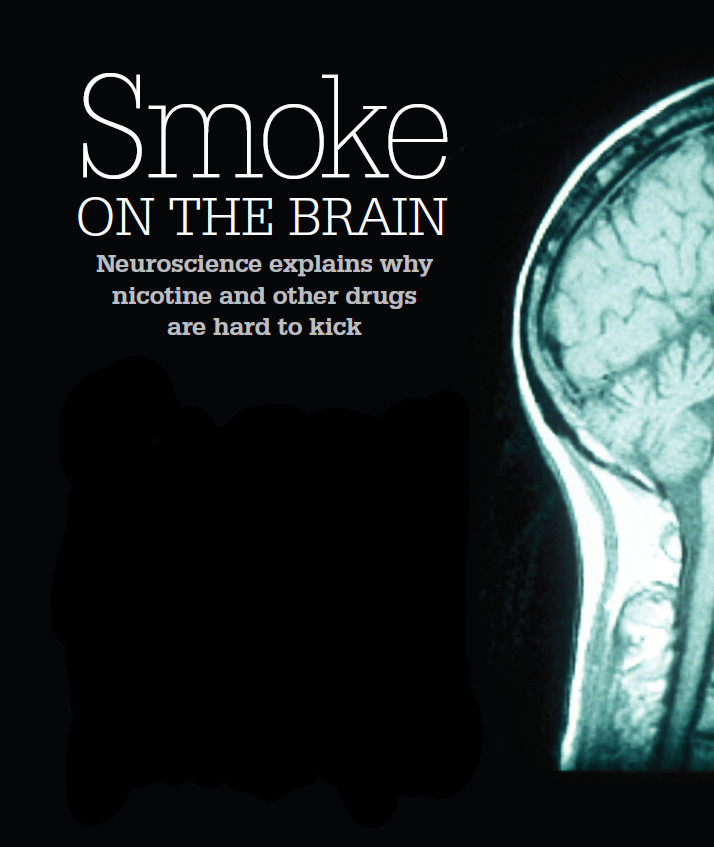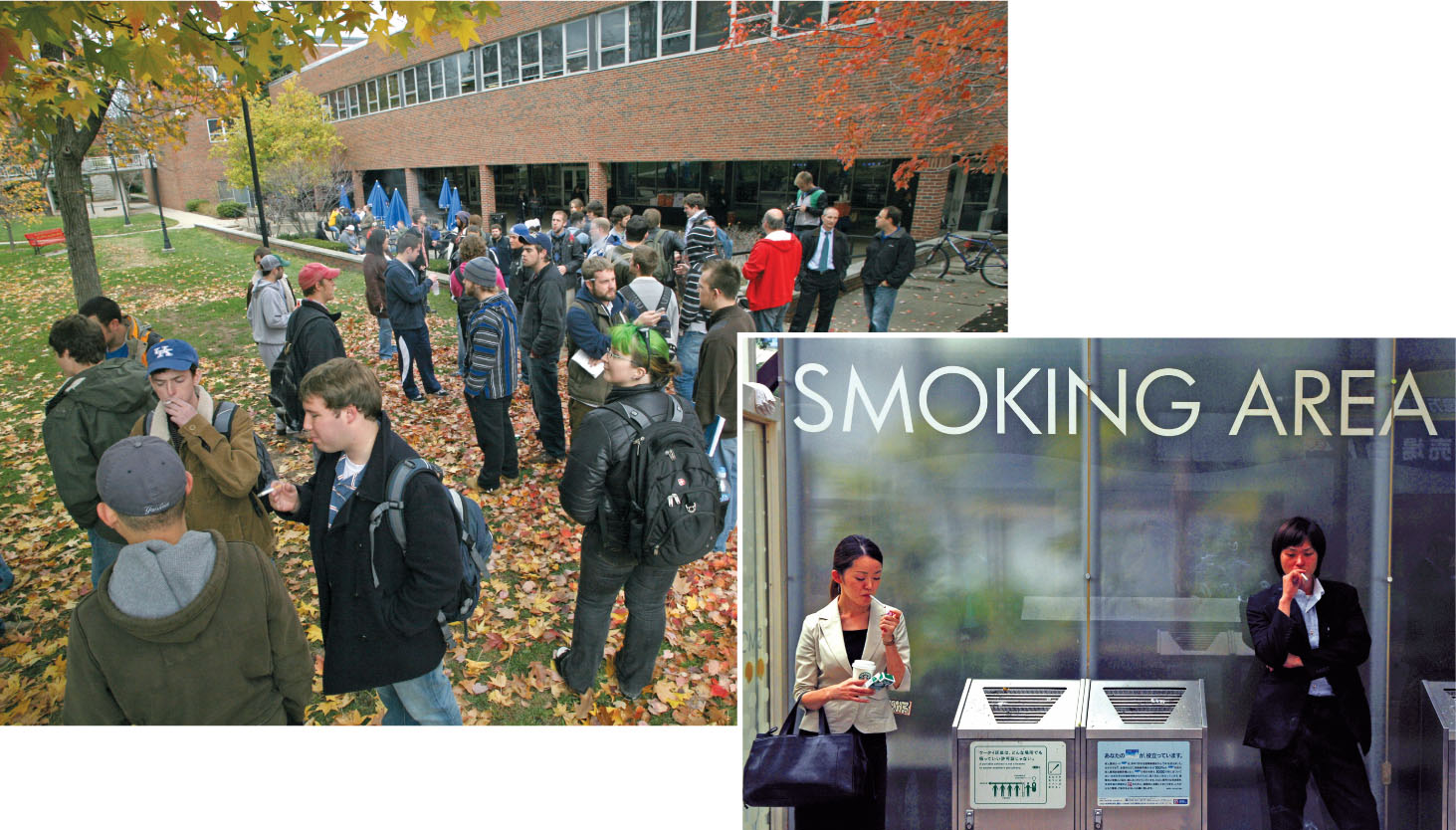


 DRIVING QUESTIONS
DRIVING QUESTIONS
- How is the nervous system organized?
- How do cells in the nervous system transmit signals?
- Why are some drugs (and some behaviors) addictive?
In-Class Activity
Click here to access Lecture ppt specifically designed for chapter 29.
Click here to access Clicker Questions specifically designed for chapter 29.
 ACK WARD THOUGHT HE COULD RESIST PICKING UP A cigarette, but the temptation was too strong. He had successfully quit smoking in 2006. But when he walked into a smoke-filled poker room 3 years later at a friend’s house in Brooklyn, New York, the scene before him seemed to run in slow motion. He watched intently as smokers sucked smoothly on their cigarettes, deeply drawing in each puff and then exhaling with sighs of contentment. He resisted that night. But poker night became a weekly event, and finally he gave in: he began smoking again.
ACK WARD THOUGHT HE COULD RESIST PICKING UP A cigarette, but the temptation was too strong. He had successfully quit smoking in 2006. But when he walked into a smoke-filled poker room 3 years later at a friend’s house in Brooklyn, New York, the scene before him seemed to run in slow motion. He watched intently as smokers sucked smoothly on their cigarettes, deeply drawing in each puff and then exhaling with sighs of contentment. He resisted that night. But poker night became a weekly event, and finally he gave in: he began smoking again.
Ward knew that smoking is risky. He had had countless arguments with his wife, who had insisted he stop smoking to protect his own health and hers as well, which is partly why he quit in the first place. But during poker night, none of that seemed to matter.

Ward had started smoking casually in high school. By the time he went to graduate school, he was smoking a pack and a half a day. “I was surrounded by people who smoked,” Ward recalls. “It never seemed unusual to smoke so much.”
Cigarette smoking is highly addictive: smokers can develop a physical and psychological need to smoke. And while anyone might be able to smoke one cigarette or even several and not become addicted, most people find it extremely difficult to stop if they have smoked for an extended length of time.
For many years, addiction was seen as a personal or moral failing—the result of a weak will or a set of bad choices. Increasingly, however, researchers are looking to biology to explain addiction’s awesome power. Brain scientists now know that cigarettes, alcohol, cocaine, and other drugs of abuse stimulate the brain’s reward system, a complex circuit of brain cells that evolved to make us feel good after eating or having sex—activities we must engage in if we are to survive and pass along our genes. Without a feeling of pleasure from these activities that ensure our survival, we might never seek out food or sex, and our species would die out. Drugs of abuse stimulate the same pleasure pathways, which is why they make people feel so good, and also why they can be so hard to resist.
Nonchemical addictions can do the same. Certain behaviors—gambling, shopping, sex–can start out as habits but slide into addictions. Even food can be addictive. Studies of obese people, for example, have shown that the brains of compulsive eaters are hyperactive in areas that respond to food. For these people, the mere thought of eating floods the brain with pleasure. In other words, almost anything deeply enjoyable can become an addiction.
But the pleasure comes at a massive cost. After prolonged use, drugs of abuse change the structure and function of the brain in ways that can wreak havoc on users’ lives. Severely addicted people may stop eating, stop working, in fact stop all activities because nothing matters except the drug–and they will do anything to get it. Without it, they have intense cravings, obsessive thoughts, and are deeply depressed.
Once established, addiction is difficult to treat. The stories of celebrities who have been in and out of rehab and the deaths of superstars such as Michael Jackson and Heath Ledger from drug overdoses are testament to just how difficult. But scientists today are gaining a better understanding of how physiological changes in the brain cause addiction, and that knowledge is leading to better treatments, which will help addicts reclaim their brains and their lives.